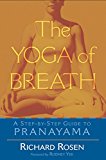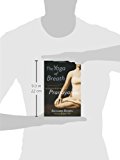Pranayam (or Pranayama) is a series of well known breathing practices in yogic traditions in India. It is often taught to the spiritual aspirant as a means of preparing for meditation. It gets the mind ready for self-inquiry and introspection, and creates altered states naturally and harmlessly. It causes the mind to become still and the body to become relaxed. It is recommended that pranayam be practiced for a half hour before a meditation, clearing the physical, mental, emotional and spiritual energies. The pause between the in and the out breath is said to be a place where deep enlightenment can be found, the place of no-time and no-space. Linger there and see what you discover.
Read more on Baba Ramdev Kapalbhathi and Hair Loss Treatment and also visit on Herbal Supplements
Pranayam is not only good for meditation preparation, but it is also good for the body. It cleanses toxins, causes high oxygenation within the cells, and can even cause some people to lose weight. It is a wonderful way to work with the body for healing and purification.
Major Types of Pranayama and Instructions
Some major types of pranayama yoga are as follows:
1. Nadi Sodhana
2. Shitali Pranayama
3. Ujjayi Pranayama
4. Kapalabhati Pranayama
5. Digra Pranayama
6. Bhastrika Pranayama
7. Bahya Pranayama
8. Bhramari Pranayama
9. Udgit pranayama
10. Anuloma & Viloma Pranayama
11. Agnisar Kriya
Instructions on How to Perform Pranayama Yoga
Nadi Sodhana:
Following steps instruct on how to perfrom the nadi sodhana pranayama:
1. Sit down in a comfortable place assuming a cross legged position
2. Now use your thumb (right hand) to close the right side of your nose. Inhale deeply using the left nostril
3. Now close the left nostril and exhale using the right one
4. In the same way, now with the left nostril still closed, inhale using the right nostril and exhale with the left one
You can continue doing this exercise for around 10 – 15 times.
Shitali Pranayama:
Sheetal also means cool, and this pranayama technique will help you achieve the same. To perform shitali pranayama, be seated in a comfortable position. Cross your legs and take five to six deep breaths to get yourself prepared.
Now open your mouth in a “o” shape and start to inhale through the mouth. When you exhale, do so with your nose.
This can be repeated five to ten times.
Ujjayi Pranayama
Ujjayi means the ocean and this pranayama is about mimicking the oceanic sound or the sound of the waves.
To do this, be seated in a comfortable position crossing your legs. Now start to inhale and exhale deeply using your mouth.
While doing this, constrict your throat as if something is choaking it when you exhale and inhale the air. This will produce a sound similar to the ocean when you breath.
Now close your mouth and start to breath using your nose, but maintain the same tone to your throat so you still continue to make the same sound as your breath.
You can repeat this prayanama breathing exercise for about ten to fifteen times.
Kapalabhati Pranayama:
To perform the kapalabhati pranayama technique, sit in a comfortable position crossing your legs. Perform two to three deep inhales and exhales.
Now inhale deeply and exhale forcefully drawing all the air out. Your belly should be drawn in, as you exhale.
When you inhale, let it happen passively without you making any effort to inhale as the belly goes back to normal position.
Exhale forcefully again and continue doing this for about 20 to 30 times.
What is the Importance of Pranayama?
Practice of pranayama yoga has been reported to be beneficial in treating a range of stress related disorders, improving autonomic functions, relieving symptoms of asthma, stuttering and reducing signs of oxidative stress. Pranayama techniques are also effective for depression cure. Practice of prayanama develops a steady mind, strong will-power and sound judgment. In addition regular pranayama helps extends life and enhance perception
In old age, the respiratory function decreases due to the contraction of the air cells of the lungs, which therey takes in less oxygen. Prayanama will help to normalize their size and make the red corpuscles circulate in all parts of the body, infusing life and vigor throughout. Through regular practice even old people can delay the ageing process.
Read more on Baba Ramdev Kapalbhathi and Hair Loss Treatment and also visit on Herbal Supplements
The Yoga of Breath: A Step-by-Step Guide to Pranayama

Product Description
For several thousand years, yogis have drawn on the powerful practice of pranayama, a technique of controlling the breath to maximize prana or life energy. Pranayama has been practiced to rejuvenate the body and as a means of self-study and self-transformation. While most yoga practitioners today focus on asanas, or body postures, a growing number of people are learning the complementary practice of pranayama to deepen and enrich their practice.
The Yoga of Breath is a guide to learning the fundamentals of pranayama and incorporating them into an existing yoga practice. Rosen’s approach is easy to follow with step-by-step descriptions of breath and body awareness exercises accompanied by clear illustrations. The book also covers the history and philosophy of pranayama, offers useful practice tips, and teaches readers how to use props to enhance the exercises.
Price: $12.34
- The Yoga of Breath A Step by Step Guide to Pranayama





